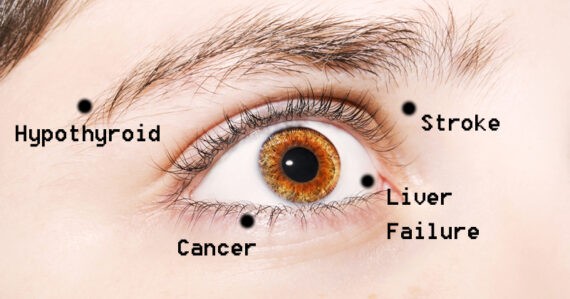 What are common Eye Problems?
What are common Eye Problems?
Eyes are a very important organ of the human body. Eyes problems cause visual problems. So eye health is much important, and we must take care of our eyes. Some common eye problems are described below along with the causes, symptoms, and treatment.
Refractive Errors
Refractive errors occur when the eyes are unable to focus on the light properly.
Lazy Eye
Lazy eye, also known as amblyopia, when one eye vision doesn’t develop properly, and the brain begins to favor the eye with proper vision. This may affect both eyes. This disease may appear in infants, children, and adults.
Color Blindness
In color blindness, you cannot see particular colors. You can’t differentiate between them. It happens when your color cells (cones) are not working properly or when your color cells are absent.
Night Blindness
Night blindness implies an eye problem in which a person experiences difficulty in seeing areas with low light or at night.
Cataracts
This is one of the most common eye conditions which may be in adults or babies.
Cataracts are commonly classified as a degenerative eye disease because they are commonly found in people having an age of 65 or more.
Usually, babies are born with a clear lens. Some babies, when born, have a milky white lens which too opaque and cloudy that it prevents light passing through the lens. Therefore, the object cannot be focused on the retina and clear image cannot be formed. This condition is known as “congenital cataracts.”
Glaucoma
Glaucoma is the condition in which the optic nerve is damaged. It includes all kind of conditions that are connected to damaging of the optic nerve.
Bulging Eyes
Bulging eyes is also known as “proptosis”. In this condition, one or both the eyes protrude from the eye sockets and cause more of the cornea to be exposed in the air. Bulging eyes put a lot of pressure on the optic nerve which may lead to blindness.
Retinal Detachment
In retinal detachment, the retina of the eye becomes separated from the back of the eye which means that retina is separated from nerve tissues and the blood vessels beneath them and may lead to vision loss or blindness.
Different eye conditions have different causes.
Refractive Errors
Causes for refractive errors include:
Lazy Eye
Color Blindness
The reasons for color blindness include
Night Blindness
Reasons for night blindness include
Cataracts
There is no common cause of cataracts in adults as it is considered a natural part of the aging process.
Meanwhile, in babies, the common causes include:
Glaucoma
Glaucoma often occurs because of severe intraocular pressure.
Bulging Eyes
Causes of bulging eyes include:
Glaucoma
Retinal Detachment
Each eye problem is characterized by different signs. Have a look:
Refractive errors
Lazy Eye
Color Blindness
Night Blindness
Cataracts
Cataracts in adults come with the following symptoms:
Meanwhile, in babies, you might see the following symptoms:
Rapid eye movement
Bulging eyes
Retinal Detachment
Since all eye conditions occur due to different reasons, their treatment also varies. However, common eye problems can be treated in the following manner:
Refractive error
The problem of refractive error can be overcome by:
Lazy Eye
Treatment needs to be sought immediately for infants and children. There is no proper treatment so children must be made used to of lazy eye. Other preventions include:
Color Blindness
There is no cure for color blindness. However, some special kind of glasses can help some people tell the difference between different colors.
Night Blindness
People who are born with this can’t be treated, but the causes mentioned above can be treated or fixed by a doctor.
Cataracts
Treatments for cataracts include refractive lens exchange.
Glaucoma
There is no proper treatment for glaucoma, but some treatments can help protect vision and reduce symptoms. These are as follows:
Bulging eyes
Treatments for bulging eyes depend on its cause. However, to combat dryness following methods are used;
Retinal Detachment
Treatments for retinal detachment include surgical treatments described below:
Repairs tears in the retina that cause the separation
Applies intense cold to the underlying tissue; a scar develops which holds the retina at its place
A small gas bubble is placed in the eye which places the retina (accompanied by laser surgery)
Suturing a silicon “buckle” to the eye that intends the wall of the eye into a position that permits retina to reattach

Canada Canadian Pharmacy dispenses all medications from licensed and regulated independent pharmacy partners internationally, including but not limited to Australia, Canada, New Zealand, India, Mauritius, Turkey, United States, Singapore and the United Kingdom. All Images on this site are registered trademarks of original manufacturers, international exporters, and property of their respective owners and are for reference only. Canada Pharmacy Online procures all products from licensed regulated international in order to provide you unbeatable lowest prices and prescription discounts for all your prescription medications, medications and Canadian Drugs at Canada Pharmacy Online.
2005-2023 Rxdrugscanada.com